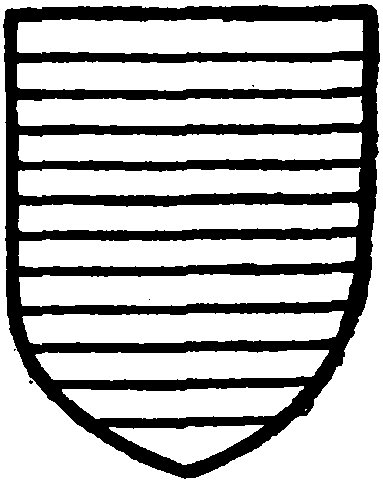A History of the County of Hampshire: Volume 4. Originally published by Victoria County History, London, 1911.
This free content was digitised by double rekeying. All rights reserved.
'Parishes: Weston Patrick', in A History of the County of Hampshire: Volume 4, ed. William Page (London, 1911), British History Online https://prod.british-history.ac.uk/vch/hants/vol4/pp108-109 [accessed 7 February 2025].
'Parishes: Weston Patrick', in A History of the County of Hampshire: Volume 4. Edited by William Page (London, 1911), British History Online, accessed February 7, 2025, https://prod.british-history.ac.uk/vch/hants/vol4/pp108-109.
"Parishes: Weston Patrick". A History of the County of Hampshire: Volume 4. Ed. William Page (London, 1911), British History Online. Web. 7 February 2025. https://prod.british-history.ac.uk/vch/hants/vol4/pp108-109.
In this section
WESTON PATRICK
Weston Patrik (xiv cent.).
Weston Patrick is a small parish containing 1,183 acres. There is a small detached portion of 16 acres on the west, separated from the main part of the parish by Upton Grey. Tyle Barn, a part of Weston Patrick, was in 1879 transferred to Upton Grey parish, (fn. 1) and a detached portion of the parish became part of South Warnborough in 1882. (fn. 2) Weston Patrick is divided from the neighbouring parish of Weston Corbett by the road leading to Upton Grey, and on the south-eastern side of this road lies the village, situated at an elevation of about 400 ft. above the ordnance datum. To the south the land rises towards Weston Common, where it reaches a height of 600 ft. The nearest station is at Hook on the London and South Western Railway. The parish contains no main roads, but it is intersected by a number of small roads bordered by trees. The whole of the southern portion is occupied by a well-wooded and elevated common. Disused chalk pits are numerous in the parish. The arable and grass land of the parish was returned in 1905 with that of Weston Corbett. The figures for the two parishes are 695¾ acres of arable, 297¼ acres of permanent grass, and 457 acres of woodland. (fn. 3) The soil and subsoil are chalk, and the chief crops are wheat, barley, and roots.
Manor
The manor of WESTON PATRICK, which probably derives its name from its 13th-century owner, Patrick de Chaworth, was held of the king in chief by the service of suit at the hundred court of Odiham. (fn. 4) It is not mentioned in the Domesday Survey, (fn. 5) and was then probably included in the extensive manor of Odiham. The first known owner of the manor was William Briwere, (fn. 6) and it was probably granted to him by Richard I or John, with both of whom he was in great favour. The manor passed from William in the same way as King's Somborne (q.v.) (fn. 7) and became part of the Duchy of Lancaster. (fn. 8) It remained in the Crown till 1546–7, (fn. 9) when it was granted by Henry VIII to Lawrence Herward and Stephen Tennant, (fn. 10) who were probably trustees for William Paulet, Lord St. John. (fn. 11)

Patrick de Chaworth. Burelly argent and gules.
From that time the manor has descended in the same way as that of Basing (fn. 12) (q.v.), and it now belongs to Lord Bolton.
In 1257 Patrick de Chaworth obtained licence to inclose with a dike and hedge his two woods of Weston called Heywood and Haselmangrave, with the adjacent lawn, containing altogether 70 acres. (fn. 13) This grant marks the foundation of Weston Patrick Park, of which frequent mention is made during the 13 th and 14th centuries. (fn. 14) A grant of free warren at Weston Patrick was made in 1316–17 to Henry de Lancaster and his wife Maud. (fn. 15) Two woods called the Great and Little Park were included in the grant of the manor of Weston to Laurence Herwood and Stephen Tennant in 1546–7. (fn. 16)
Church
The little church of ST. LAWRENCE was rebuilt in 1868, and now consists of a chancel with south organ chamber and vestry, nave with south aisle and north porch, and west bell-turret. The nave and chancel are of the same width, with red tiled roofs, and the bell-turret is of wood with a shingled spire. The only part of the old church which has been preserved is the north doorway of the nave, which dates from the end of the 12th century, and has a round arch of a single order with an edge roll and double-chamfered label, the roll being continued down the jambs. At the springing are square abaci with a roll and hollow chamfer beneath.
The single bell is modern, dating from the rebuilding of the church.
The plate consists of a silver chalice and paten cover of 1568, a silver-gilt chalice and paten dated 1896, and a pewter paten and flagon.
The first book of the registers runs from 1598 to 1715, and the second from 1766 to 1812. There is also a book of burials in woollen, 1679–1770, and the printed marriage register, 1755–1809.
Advowson
The living of Weston Patrick was a chapelry annexed to Odiham, (fn. 17) but it was declared a rectory in April 1866, (fn. 18) and the living is now in the gift of the Bishop of Winchester.
Charities
Duke of Bolton's Gift. See under Basingstoke. The sum of £2 8s. is applicable in this parish.
